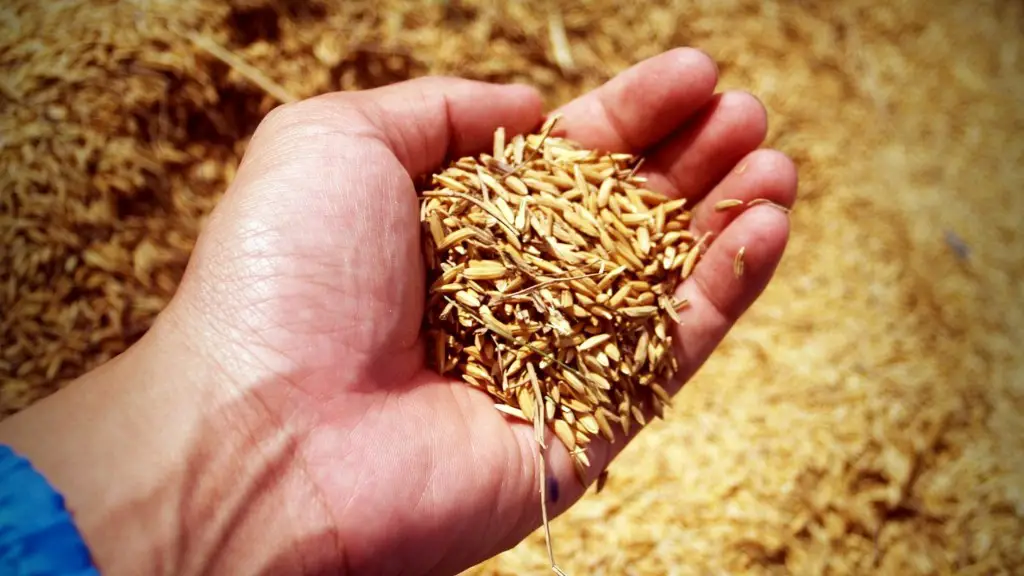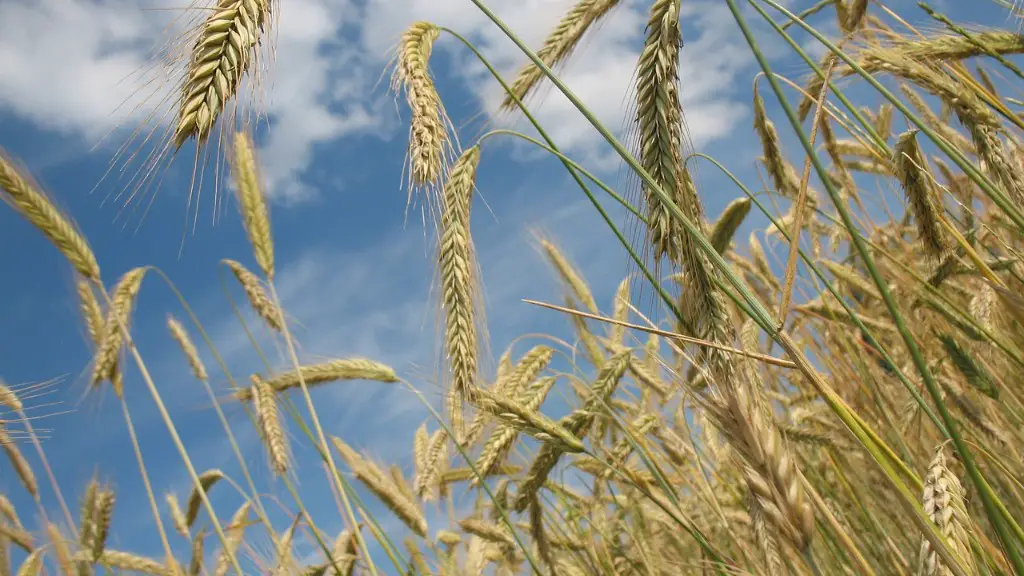Since the late 18th century, Mexican immigrants have been coming to California to work in agriculture. They have had a significant impact on the state’s agriculture, both in terms of the types of crops grown and the way they are grown.
Mexican immigrants brought with them a wealth of knowledge about agriculture, and they were instrumental in introducing new crops to California. They also helped to improve growing techniques and helped to increase crop yields.
Today, Mexican immigrants continue to play a vital role in California’s agriculture, and they are now the state’s largest group of farmworkers. In addition to working in the fields, they also play an important role in processing and packaging agricultural products.
The influx of Mexican immigrants to California in the late 19th and early 20th centuries had a profound impact on the state’s agriculture. The newcomers brought with them a wealth of knowledge and experience in farming and ranching, which helped to improve the efficiency and productivity of California’s agricultural operations. In addition, the Mexican immigrants helped to increase the state’s labor force, which was vital to the development of the state’s agricultural sector.
How does the immigration reform affect agriculture?
The current immigration policy in the United States is having a profound impact on the agricultural industry. Over half of the current farm workers are immigrants, and the majority of them are undocumented. This leaves many farm workers vulnerable to abuse, substandard working conditions, and depressed wages. The current policy is inadequate and needs to be reformed in order to protect the rights and improve the working conditions of these workers.
The Mexican Farm Labor Program, also known as the Bracero Program, was established in 1942 by executive order. This series of diplomatic accords between Mexico and the United States permitted millions of Mexican men to work legally in the United States on short-term labor contracts. The program was created in response to the shortage of farm workers in the United States during World War II, and it continued until 1964. Although the program was initially designed to be temporary, it had a lasting impact on the demographics of both the United States and Mexico.
Why were the migrant workers needed by the farmers of California
The new immigration laws in the United States have caused the forced deportation of thousands of Mexican workers. This has created a need for farm workers, which has attracted the Dust Bowl migrants to settle in California’s farm valleys. However, in a short amount of time, there have been too many workers and not enough jobs.
Agricultural workers are an important part of the workforce in many states, especially those where agriculture is a major industry. In California, for example, immigrants make up more than 80 percent of the agricultural workforce. This is due to a number of factors, including the fact that many agricultural jobs are low-paying and difficult to fill with domestic workers. Additionally, immigrants often have experience working in agriculture and are willing to work long hours for relatively low pay.
How does Migrant Labour affect agriculture?
It is believed by some scholars that labor migration prevents farmers from adopting cultivated land quality protection measures. The argument is that labor migration reduces the share of agricultural income in households, making farmers less concerned about productivity and the sustainable use of cultivated land.
There are an estimated 283,000 undocumented immigrants who work in the agricultural industry in the United States. This represents approximately 4 percent of the total undocumented workforce in the country. These workers play a vital role in the agricultural sector, and their contributions are essential to the industry. However, because of their undocumented status, they often face challenges in terms of working conditions, pay, and benefits. Additionally, they are at risk of being deported if they are caught by immigration authorities.
How many Mexicans work in agricultural?
The agricultural sector in Mexico employed approximately 673 million people in the second quarter of 2022, up from 648 million people in the previous quarter. The sector is expected to continue to grow in the coming quarters, as the country’s economy recovers from the pandemic.
The revolution in Mexico put some people in danger and they fled to the United States for safety. The revolution also caused an economic downturn in Mexico, and many workers realized they could earn more money in the United States than they could in their home country. Workers continued to move to California and other southwest states throughout the 1920s.
What system developed by the Mexican people has helped make Mexico an excellent place for agriculture
This set of artificial floating islands is an indigenous and highly sustainable agriculture system that has been used in southern Mexico for centuries. The chinampas system is highly efficient in terms of land use and water use, and is therefore perfect for areas with limited resources. The chinampas agricultural system is also known for its high level of biodiversity, as it sustains a great variety of plant and animal species.
Migrant workers in the United States have long faced difficult working and living conditions. They have lacked educational opportunities for their children, lived in poverty and terrible housing conditions, and faced discrimination and violence when they sought fair treatment. Attempts to organize workers into unions were violently suppressed.
In recent years, some progress has been made in improving the lives of migrant workers. The Obama administration enacted a series of reforms that increased protections for workers and made it easier for them to obtain visas. And a number of businesses have signed on to a set of voluntary principles that commit them to improve wages and working conditions for migrant workers.
But much more needs to be done. Migrant workers are still paid low wages, often live in substandard housing, and are at risk of exploitation and abuse. They need stronger protections, and a path to citizenship so they can fully participate in society and realize their rights.
What was a common crop that the migrants worked with during their time in California?
The Joad family in John Steinbeck’s “The Grapes of Wrath” are migrant farmers who end up in the San Joaquin Valley picking grapes and cotton. Forty percent of migrant farmers wound up in the Valley, making it one of the most important agricultural regions in the United States. The Valley’s climate and soil are ideal for grape-growing, and the region is now home to some of the world’s largest vineyards.
The “Okie” influx refers to the large number of people who migrated to California from the Dust Bowl states during the 1930s. These people were often treated with disdain and even hatred by the residents of California. The California Citizens Association was formed in order to find a solution to this problem, and they succeeded in extending the waiting period for California relief to three years.
Why were immigrants important to the growth of industry
The statement by Zolberg is certainly true for the early days of immigrants in the United States. They were willing to work for lower wages and accept inferior working conditions than native born workers. This was due to the fact that they were new to the country and did not have the same skills or experience as native born workers. However, over time, as immigrants became more assimilated into the United States, they became more demanding of better wages and working conditions. This was due to the fact that they had acquired the same skills and experience as native born workers and were no longer willing to work for less. The Great Depression of the 1930s was a major turning point in the role of immigrants in the United States. After this time, immigrants were no longer as willing to accept lower wages and inferior working conditions. They demanded the same wages and working conditions as native born workers. This was due to the fact that they had seen firsthand the effects of the Great Depression and were no longer willing to work for less.
According to the most recent estimates, between one third and one half of all farmworkers in America reside in California. This amounts to roughly 500,000 to 800,000 individuals. Of these farmworkers, it is estimated that 75% are undocumented. This figure is even higher in Santa Cruz County, where it is estimated that 83% of farmworkers are undocumented. Given the large number of undocumented farmworkers in California, it is clear that this issue is of critical importance to the state. Farmworkers play a vital role in the agricultural industry, and their rights and safety must be protected. Unfortunately, the undocumented status of many farmworkers makes them vulnerable to exploitation and abuse. It is important that California takes steps to protect these workers and ensure that they are treated fairly.
What percentage of farm workers in California are Latino?
It’s no surprise that California employs the most agricultural workers in the US – after all, the state is home to a large Hispanic population. According to the latest National Agricultural Worker Survey, an estimated 77% of all farmworkers are Hispanic. This is not only good news for the agricultural industry, but also for the economy as a whole. Hispanics are an important part of the workforce and their involvement in the agricultural industry helps to support the US economy.
Agricultural labourers often have to work long hours for little pay. They are often exposed to hazardous conditions, such as working with harmful chemicals or in extreme weather conditions. They may also have to work night shifts or overtime. These conditions can lead to health problems and can make it difficult for workers to support their families.
Final Words
The influx of Mexican immigrants to California in the late 19th and early 20th centuries had a profound impact on the state’s agriculture. Mexican workers brought with them a wealth of knowledge and experience in crop cultivation and livestock husbandry, which helped to transformed California agriculture. Mexican immigrants also helped to create new agricultural industries in the state, such as the production of chili peppers and other spices. Today, Mexican immigrants continue to play a vital role in California agriculture, accounting for a significant portion of the state’s agricultural labor force.
The impact of Mexican immigrants on agriculture in California has been both positive and negative. On the one hand, Mexican immigrants have brought new ideas and methods to California agriculture, which has helped to improve efficiency and productivity. On the other hand, the influx of Mexican immigrants has also put downward pressure on wages in the agricultural sector, which has made it difficult for some native-born Californians to find work in agriculture. Overall, the impact of Mexican immigrants on California agriculture has been mixed.





